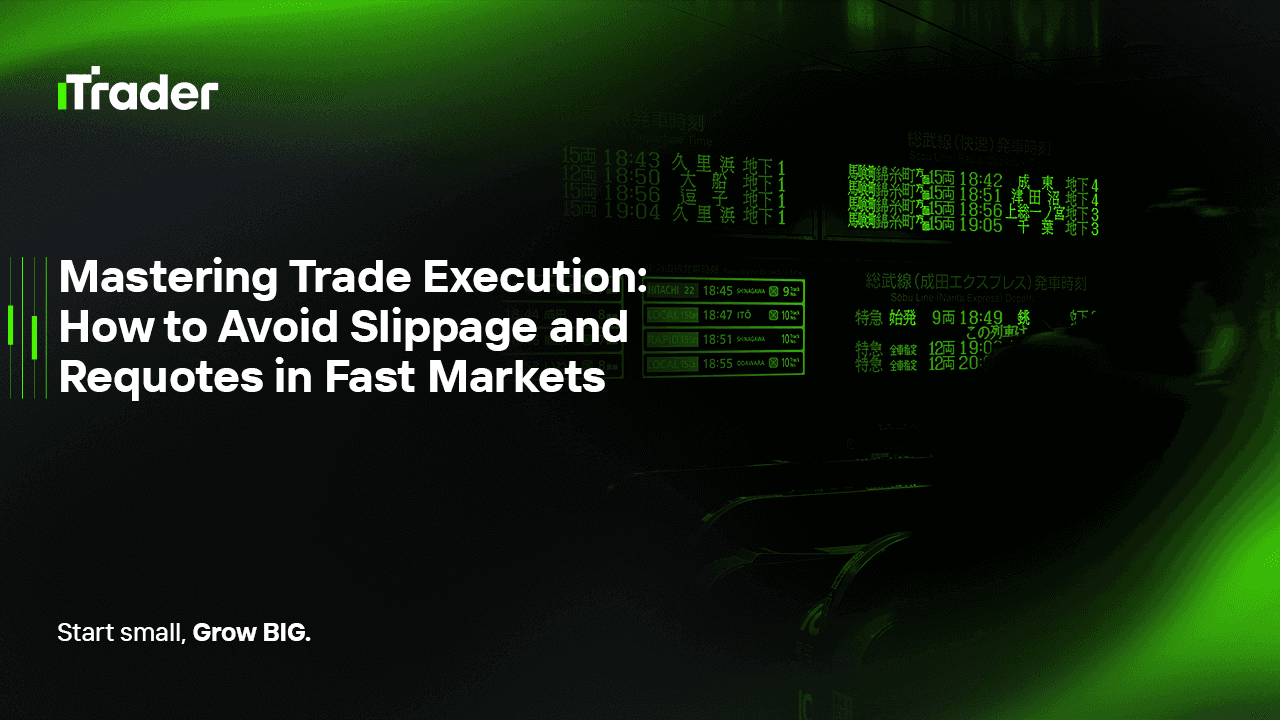2025-09-22
Every trader knows the feeling: you spot the setup, hit the buy button, and then… your entry isn’t where you expected. The market moved a little, your broker slipped the order, or worse—they sent you a requote. Suddenly your risk looks bigger, your reward-to-risk ratio is skewed, and frustration creeps in.
For retail traders this might be an annoyance, but for prop traders it’s a different story. Slippage and requotes can be the difference between passing or failing an evaluation. When a firm sets strict drawdown rules, even small execution errors matter.

In this blog, we’ll break down what slippage and requotes really are, why they hit prop traders harder, and what you can actually do to manage them. Think of it as a trader-to-trader conversation about one of the least glamorous but most important parts of the game: getting filled at the right price.
Execution isn’t just clicking “Buy” or “Sell.” It’s the whole chain:
Along that chain, two things can happen:
If you’ve ever traded around big news events, you’ve definitely seen one—or both.
Slippage is simply the gap between your intended price and your actual fill.
Example: You buy EUR/USD at 1.1000. Instead of 1.1000, you get filled at 1.1003. That’s a 3-pip slippage against you.
A requote is when your broker says: “Sorry, we can’t fill you at that price. Here’s a new one—do you want it?”
Example: You try to buy GBP/USD at 1.2500. The broker responds: “New available price: 1.2505.” You must accept or cancel.
Requotes are most common with dealing desk brokers, especially when markets are moving fast. They’re frustrating because they interrupt your flow—you either chase the market or miss the trade.
For a retail trader, slippage and requotes just eat into profit margins. For a prop trader, they can break the rules of the game.
That’s why execution quality is part of being a professional. Strategy alone isn’t enough.
Here’s the truth: you’ll never fully escape slippage. It’s part of trading. What matters is how you prepare for it and respond when it happens.
The traders who survive in prop aren’t the ones with zero slippage—they’re the ones who accept it and keep their discipline intact.
Execution isn’t just a technical detail—it’s part of risk management.
Picture this: it’s Nonfarm Payroll Friday. Your system calls for a breakout buy at 1.0800 in EUR/USD.
For many traders, this kind of slippage is enough to break a prop evaluation. The smart play? Sit out unless your system is specifically designed for that chaos.
Good traders measure everything—including execution.
Execution data is part of your trading edge. Ignore it, and you’re trading blind.
Slippage and requotes aren’t glamorous topics. They don’t show up in flashy strategy backtests. But for prop traders, they’re deal-makers or deal-breakers.
You can’t eliminate them, but you can manage them. The keys are:
Prop firms don’t expect perfection—they expect professionalism. Managing execution is part of proving you’re ready to handle real capital.
© 2025 iTrader Global Limited|公司註冊編號:15962
iTrader Global Limited 註冊於科摩羅聯盟昂儒昂自治島穆扎穆杜 Hamchako,並受科摩羅證券委員會授權與監管。我們的牌照編號為 L15962/ITGL。
iTrader Global Limited 以「iTrader」為商業名稱經營,獲得從事外匯交易活動之授權。公司標誌、商標與網站均為 iTrader Global Limited 之專有財產。
iTrader Global Limited 的其他子公司包括:iTrader Global Pty Ltd,澳洲公司註冊編號(ACN):686 857 198。該公司是 Opheleo Holdings Pty Ltd 的授權代表(澳洲金融服務代表編號:001315037),Opheleo 持有澳洲金融服務執照(AFSL 編號:000224485),註冊地址為:Level 1, 256 Rundle St, Adelaide, SA 5000。
免責聲明:本實體並非本網站所交易金融產品之發行者,亦不對其負責。
風險提示: 差價合約(CFD)交易因槓桿效應具高度資本迅速損失風險,未必適合所有使用者。
參與基金、差價合約及其他高槓桿商品交易,需具備專業知識。
研究顯示,84.01% 的槓桿交易者最終蒙受損失。請務必充分了解相關風險,並在投入資金前確保自身已準備好承擔全部損失的可能性。
iTrader 特此聲明,對任何個人或法人因槓桿交易所導致之風險、損失或其他損害,概不承擔全部責任。
使用限制: iTrader 並不向法律、法規或政策禁止此類活動的國家或地區居民提供網站或服務。如您居住於限制使用本網站或服務之司法管轄區,您有責任自行確保遵守當地法律。